SA-3 Goa on:
[Wikipedia]
[Google]
[Amazon]
The S-125 ''Neva/Pechora'' (russian: С-125 "Нева"/"Печора",
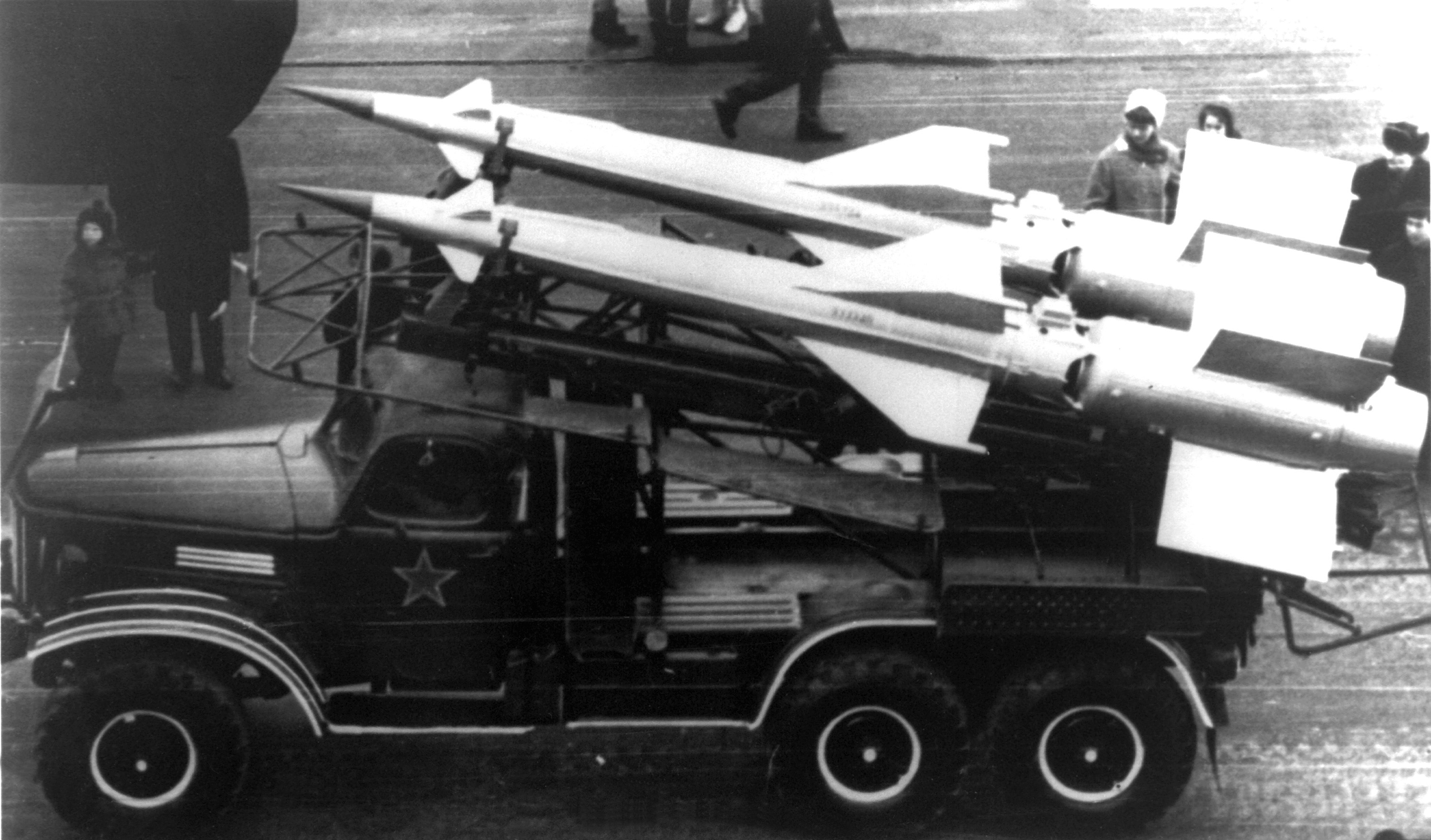
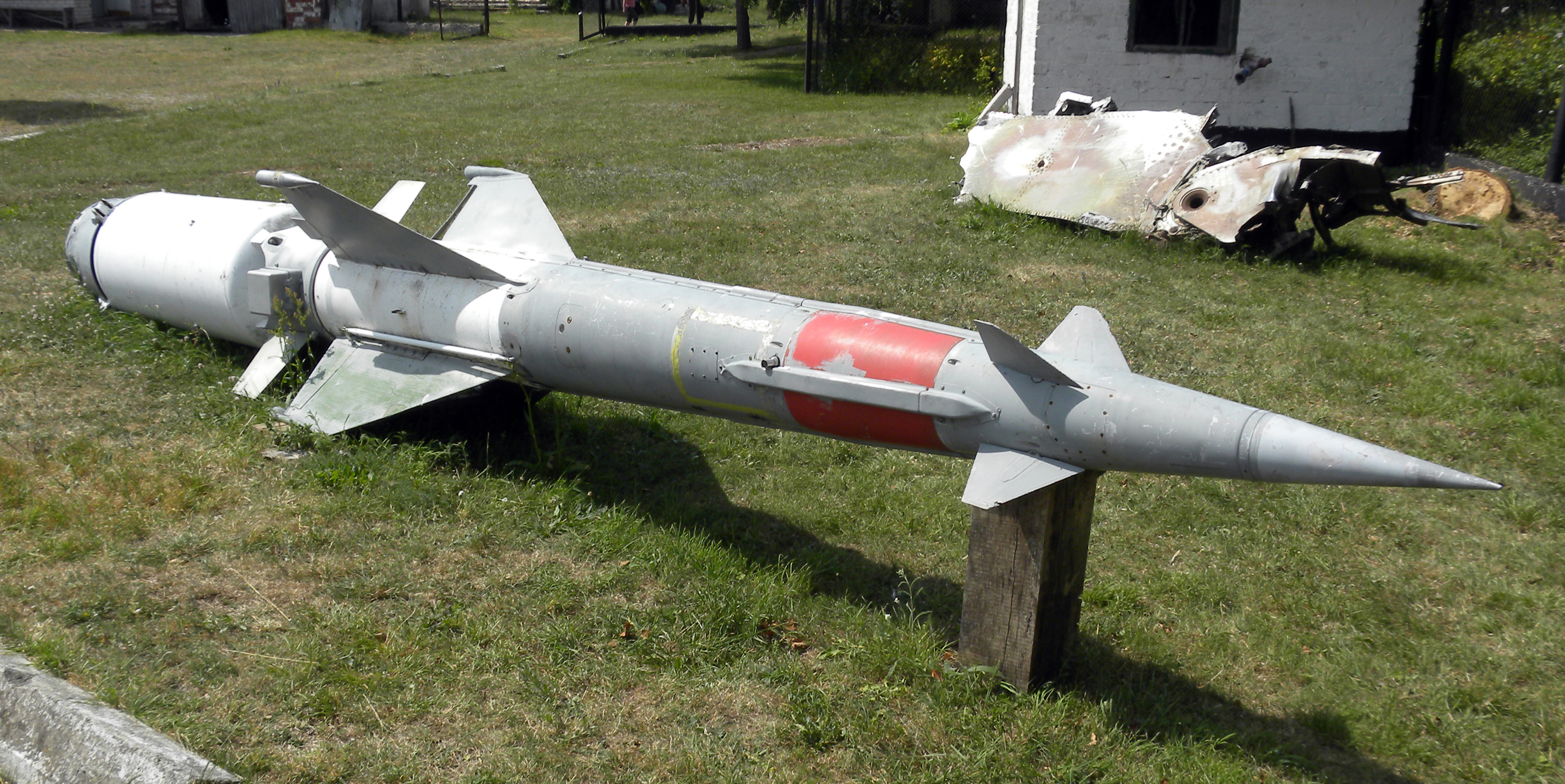 The S-125 was first deployed between 1961 and 1964 around
The S-125 was first deployed between 1961 and 1964 around
 The Soviets supplied several S-125s to the Arab states in the late 1960s and 1970s, most notably Egypt and Syria. The S-125 saw extensive action during the
The Soviets supplied several S-125s to the Arab states in the late 1960s and 1970s, most notably Egypt and Syria. The S-125 saw extensive action during the
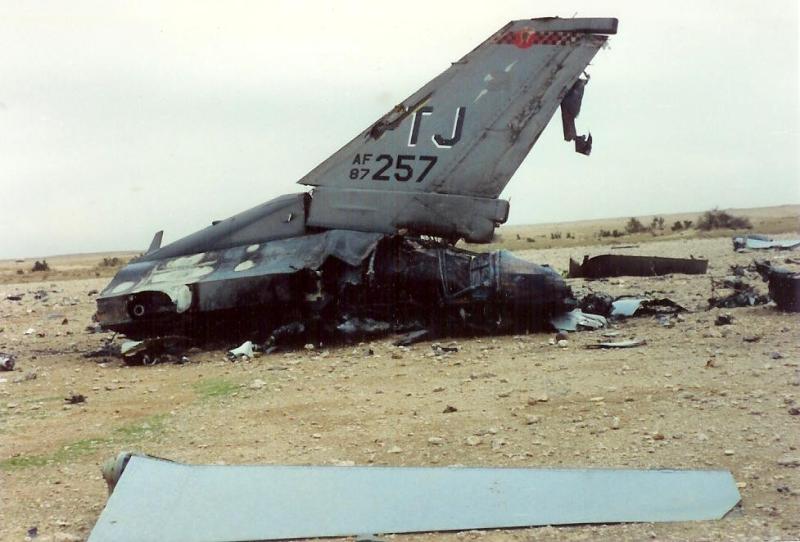 On the opening night of Desert Storm, on 17 January 1991, a
On the opening night of Desert Storm, on 17 January 1991, a 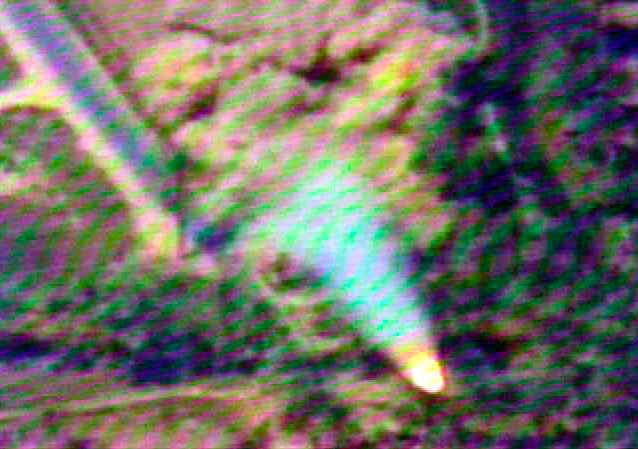
"Holloman commander recalls being shot down in Serbia"
. ''F-16.net'', 7 February 2007. Retrieved: 16 May 2008. Retired USAF Lieutenant Colonel Charlie Hainline stated in a 2020 interview that a second F-117A was damaged during the campaign, on 30 April 1999. The aircraft returned to Spangdahlem base, but it supposedly never flew again. During the war, different Yugoslav SAM sites, possibly including S-125s, also shot down some NATO
 Work on a naval version M-1 Volna (SA-N-1) started in 1956, along with work on a land version. It was first mounted on a rebuilt Kotlin class destroyer (Project 56K) ''Bravyi'' and tested in 1962. In the same year, the system was accepted. The basic missile was a V-600 (or 4K90) (range: from 4 to 15 km, altitude: from 0.1 to 10 km). Fire control and guidance is carried out by 4R90 Yatagan radar, with five
Work on a naval version M-1 Volna (SA-N-1) started in 1956, along with work on a land version. It was first mounted on a rebuilt Kotlin class destroyer (Project 56K) ''Bravyi'' and tested in 1962. In the same year, the system was accepted. The basic missile was a V-600 (or 4K90) (range: from 4 to 15 km, altitude: from 0.1 to 10 km). Fire control and guidance is carried out by 4R90 Yatagan radar, with five

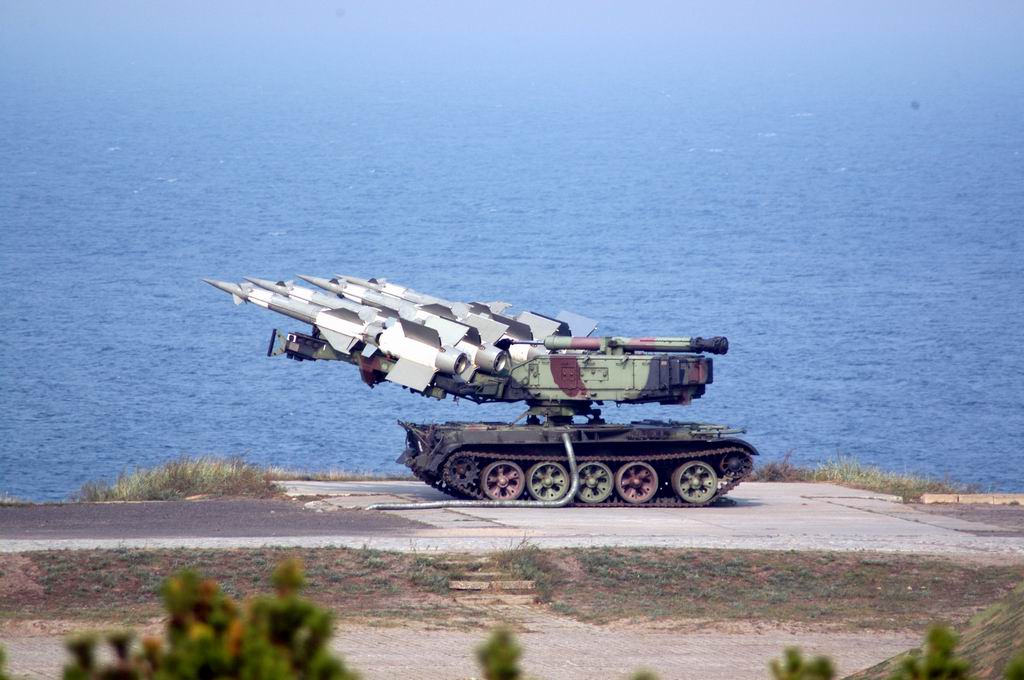 Since Russia replaced all of its S-125 sites with S-300 systems, they decided to upgrade the S-125 systems being removed from service to make them more attractive to export customers.
* Released in 2000, the Pechora-2 version features better range, multiple target engagement ability and a higher
Since Russia replaced all of its S-125 sites with S-300 systems, they decided to upgrade the S-125 systems being removed from service to make them more attractive to export customers.
* Released in 2000, the Pechora-2 version features better range, multiple target engagement ability and a higher
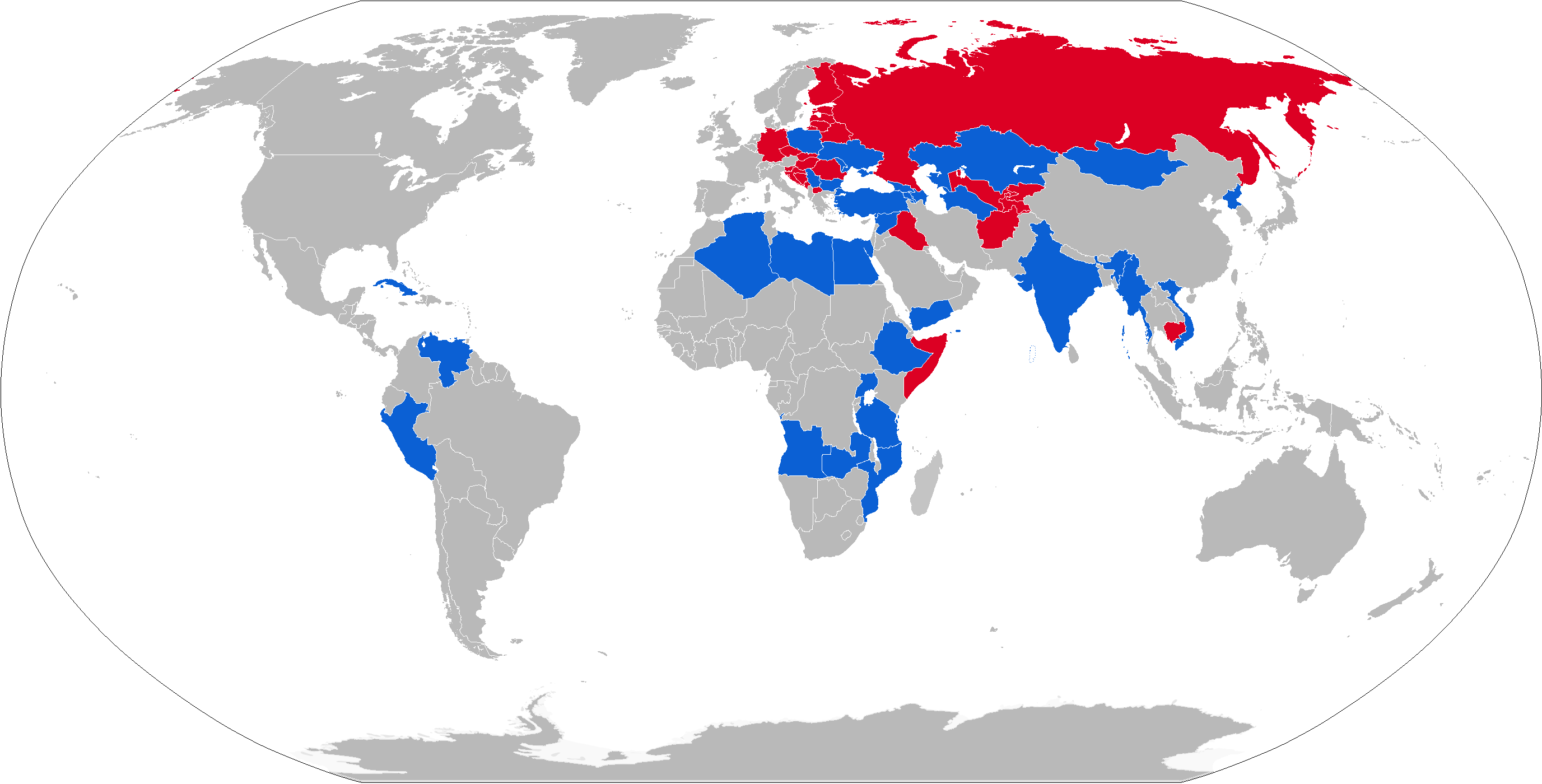

 * : 8 systems (batteries) of Pechora-2M air defence systems. 30 launching vehicles.
* 140 batteries
*
* 12 Newa SC
* 8 batteries
* 148 Pechora + 12Pechora-2M
*
*
*
*
* Ukrainian Pechora S-125-2D variant with new radar and electronics. To be deployed in Libya and Syria.
* Pechora-2TM
*
* 11 Pechora-2M Ordered 11 new systems, delivered 1 system in 2011 (up to 8 launchers)
* S-125-2TM and S-125-VT modernized variants
* majority upgraded to Pechora-2M standard
*
*
* : 8 systems (batteries) of Pechora-2M air defence systems. 30 launching vehicles.
* 140 batteries
*
* 12 Newa SC
* 8 batteries
* 148 Pechora + 12Pechora-2M
*
*
*
*
* Ukrainian Pechora S-125-2D variant with new radar and electronics. To be deployed in Libya and Syria.
* Pechora-2TM
*
* 11 Pechora-2M Ordered 11 new systems, delivered 1 system in 2011 (up to 8 launchers)
* S-125-2TM and S-125-VT modernized variants
* majority upgraded to Pechora-2M standard
*
*
Image:FlatFace.JPG, P-15 "Flat Face" radar.
Image:SNR-125 2.jpg, SNR-125 "Low Blow" radar.
Image:PRV-11 "Side Net" radar.jpg, PRV-11 "Side Net" radar.
Description of C-125 on the producer site
in Russian
Jane's Defence news on Egyptian S-125 upgrade, April 2006
Defencetalk on Egyptian S-125 upgrade, October 2006
S-125M1 Neva (SA-3b Goa) SAM Simulator
{{DEFAULTSORT:S-125 Neva Pechora Cold War surface-to-air missiles of the Soviet Union Naval surface-to-air missiles Surface-to-air missiles of the Soviet Union Surface-to-air missiles of Russia Almaz-Antey products Military equipment introduced in the 1960s
NATO reporting name
NATO reporting names are code names for military equipment from Russia, China, and historically, the Eastern Bloc (Soviet Union and other nations of the Warsaw Pact). They provide unambiguous and easily understood English words in a uniform man ...
SA-3 ''Goa'') is a Soviet surface-to-air missile
A surface-to-air missile (SAM), also known as a ground-to-air missile (GTAM) or surface-to-air guided weapon (SAGW), is a missile designed to be launched from the ground to destroy aircraft or other missiles. It is one type of anti-aircraft syst ...
system that was designed by Aleksei Isaev
Aleksei Mikhailovich Isaev (also Isayev; Russian: Алексе́й Миха́йлович Иса́ев; October 24, 1908, in Saint Petersburg – June 10, 1971, in Moscow) was a Russian rocket engineer.
Aleksei Isaev began work under Leonid Du ...
to complement the S-25 and S-75. It has a shorter effective range and lower engagement altitude
Altitude or height (also sometimes known as depth) is a distance measurement, usually in the vertical or "up" direction, between a reference datum and a point or object. The exact definition and reference datum varies according to the context ...
than either of its predecessors and also flies slower, but due to its two-stage design it is more effective against more maneuverable targets. It is also able to engage lower flying targets than the previous systems, and being more modern it is much more resistant to ECM
ECM may refer to:
Economics and commerce
* Engineering change management
* Equity capital markets
* Error correction model, an econometric model
* European Common Market
Mathematics
* Elliptic curve method
* European Congress of Mathemat ...
than the S-75. The 5V24 (V-600) missiles reach around Mach 3 to 3.5 in flight, both stages powered by solid fuel
Solid fuel refers to various forms of solid material that can be burnt to release energy, providing heat and light through the process of combustion. Solid fuels can be contrasted with liquid fuels and gaseous fuels. Common examples of solid fuel ...
rocket motor
A rocket engine uses stored rocket propellants as the reaction mass for forming a high-speed propulsive jet of fluid, usually high-temperature gas. Rocket engines are reaction engines, producing thrust by ejecting mass rearward, in accordance ...
s. The S-125, like the S-75, uses radio command guidance. The naval version of this system has the NATO reporting name SA-N-1 Goa and original designation M-1 Volna (Russian Волна – ''wave'').
Operational history
Soviet Union

 The S-125 was first deployed between 1961 and 1964 around
The S-125 was first deployed between 1961 and 1964 around Moscow
Moscow ( , US chiefly ; rus, links=no, Москва, r=Moskva, p=mɐskˈva, a=Москва.ogg) is the capital and largest city of Russia. The city stands on the Moskva River in Central Russia, with a population estimated at 13.0 million ...
, augmenting the S-25 and S-75 sites already ringing the city, as well as in other parts of the USSR
The Soviet Union,. officially the Union of Soviet Socialist Republics. (USSR),. was a transcontinental country that spanned much of Eurasia from 1922 to 1991. A flagship communist state, it was nominally a federal union of fifteen nati ...
. In 1964, an upgraded version of the system, the S-125M "Neva-M" and later S-125M1 "Neva-M1" was developed. The original version was designated SA-3A by the US DoD
The United States Department of Defense (DoD, USDOD or DOD) is an executive branch department of the federal government charged with coordinating and supervising all agencies and functions of the government directly related to national secur ...
and the new Neva-M named SA-3B and (naval) SA-N-1B. The Neva-M introduced a redesigned booster and an improved guidance system. The S-125 was not used against U.S. forces in Vietnam
Vietnam or Viet Nam ( vi, Việt Nam, ), officially the Socialist Republic of Vietnam,., group="n" is a country in Southeast Asia, at the eastern edge of mainland Southeast Asia, with an area of and population of 96 million, making ...
, because the Soviets feared that China (after the souring of Sino-Soviet relations in 1960), through which most, if not all of the equipment meant for North Vietnam had to travel, would try to copy the missile.
Angola
The FAPA-DAA acquired a significant number of S-125s, and these were encountered during the first strike ever flown by SAAFMirage F.1
The Dassault Mirage F1 is a French fighter and attack aircraft designed and manufactured by Dassault Aviation. It was developed as a successor to the popular Mirage III family.
During the 1960s, Dassault commenced development of what would be ...
s against targets in Angola – in June 1980. While the SAAF reported two aircraft were damaged by SAMs during this action, Angola claimed to have shot down four.
On 7 June 1980, while attacking SWAPO
The South West Africa People's Organisation (, SWAPO; af, Suidwes-Afrikaanse Volks Organisasie, SWAVO; german: Südwestafrikanische Volksorganisation, SWAVO), officially known as the SWAPO Party of Namibia, is a political party and former ind ...
's Tobias Haneko Training Camp during Operation Sceptic (Smokeshell), SAAF Major Frans Pretorius and Captain IC du Plessis, both flying Mirage F.1s, were hit by S-125s. Pretorius's aircraft was hit in a fuel line and he had to perform a deadstick landing
A deadstick landing, also called a dead-stick landing, is a type of forced landing when an aircraft loses all of its propulsive power and is forced to land. The "stick" does not refer to the flight controls, which in most aircraft are either ful ...
at AFB Ondangwa. Du Plessis's aircraft sustained heavier damage and had to divert to Ruacana forward airstrip, where he landed with only the main undercarriage extended. Both aircraft were repaired and returned to service.
Middle East
War of Attrition
The War of Attrition ( ar, حرب الاستنزاف, Ḥarb al-Istinzāf; he, מלחמת ההתשה, Milhemet haHatashah) involved fighting between Israel and Egypt, Jordan, the Palestine Liberation Organisation (PLO) and their allies fro ...
and the Yom Kippur War
The Yom Kippur War, also known as the Ramadan War, the October War, the 1973 Arab–Israeli War, or the Fourth Arab–Israeli War, was an armed conflict fought from October 6 to 25, 1973 between Israel and a coalition of Arab states led by E ...
. During the latter, the S-125, along with the S-75 Dvina
The S-75 (Russian: С-75; NATO reporting name SA-2 Guideline) is a Soviet-designed, high-altitude air defence system, built around a surface-to-air missile with command guidance. Following its first deployment in 1957 it became one of the most w ...
and 2K12 Kub
The 2K12 ''"Kub"'' (russian: 2К12 "Куб"; en, cube) (NATO reporting name: SA-6 "Gainful") mobile surface-to-air missile system is a Soviet low to medium-level air defence system designed to protect ground forces from air attack. "2К12" is ...
, formed the backbone of the Egyptian air defence network. In Egypt, March–July 1970 Soviet battalions of S-125 17 Shooting (35 missiles) shot down nine Israeli and one Egyptian planes. General Muhammed Ali Hafez (Air defense forces commander in the Egyptian Army) was the first man in the world to reuse the launched missiles in creating new ones . Israel recognized the 5 F-4 Phantoms in 1970 (1 more was W/O) and in 1973 another 6
Iraq
 On the opening night of Desert Storm, on 17 January 1991, a
On the opening night of Desert Storm, on 17 January 1991, a B-52
The Boeing B-52 Stratofortress is an American long-range, subsonic, jet-powered strategic bomber. The B-52 was designed and built by Boeing, which has continued to provide support and upgrades. It has been operated by the United States Air ...
G was damaged by a missile. The source of the missile is disputed.. It could have been a S-125 or a 2K12 Kub
The 2K12 ''"Kub"'' (russian: 2К12 "Куб"; en, cube) (NATO reporting name: SA-6 "Gainful") mobile surface-to-air missile system is a Soviet low to medium-level air defence system designed to protect ground forces from air attack. "2К12" is ...
, while other sources claim a MiG-29 fired a Vympel R-27
The Vympel R-27 (NATO reporting name AA-10 Alamo) is a family of air-to-air missile developed by the Soviet Union. It remains in service with the Russian Air Force, air forces of the Commonwealth of Independent States and air forces of many o ...
R missile and damaged the bomber. However, the U.S. Air Force disputes these claims, stating the bomber was hit by an AGM-88
The AGM-88 HARM (High-speed Anti-Radiation Missile) is a tactical, air-to-surface anti-radiation missile designed to home in on electronic transmissions coming from surface-to-air radar systems. It was originally developed by Texas Instruments as ...
High-speed, Anti-Radiation Missile (HARM), fired by a friendly aircraft, that homed on the fire-control radar of the B-52's tail gun; the jet was subsequently renamed ''In HARM's Way''. Shortly following this incident, General George Lee Butler
George Lee Butler (born June 17, 1939), sometimes known as Lee Butler, is an American retired military officer. He was commander in chief, United States Strategic Command, and the last commander of Strategic Air Command. Following his retirement ...
announced that the gunner position on B-52 crews would be eliminated, and the gun turrets permanently deactivated, commencing on 1 October 1991.
On 19 January, 1991, a USAF F-16
The General Dynamics F-16 Fighting Falcon is a single-engine multirole fighter aircraft originally developed by General Dynamics for the United States Air Force (USAF). Designed as an air superiority day fighter, it evolved into a successf ...
(serial 87-257) was shot down. The aircraft was struck by a S-125 just south of Baghdad. The pilot, Major Jeffrey Scott Tice, ejected safely but became a POW. It was the 8th combat loss and the first daylight raid over Baghdad.

Yugoslavia
A Yugoslav Army250th Air Defense Missile Brigade
The 250th Air Defence Missile Brigade ( sr, 250. ракетна бригада за протвваздухопловна дејства, translit=250. raketna brigada za protivvazduhoplovna dejstva) is a joint tactical unit of Serbian Air Force an ...
3rd battery equipped with S-125 system shot down a F-117 Nighthawk
The Lockheed F-117 Nighthawk is a retired American single-seat, twin-engine stealth attack aircraft developed by Lockheed's secretive Skunk Works division and operated by the United States Air Force (USAF). It was the first operational aircr ...
stealth attack aircraft on March 27, 1999 during the Kosovo War
The Kosovo War was an armed conflict in Kosovo that started 28 February 1998 and lasted until 11 June 1999. It was fought by the forces of the Federal Republic of Yugoslavia (i.e. Serbia and Montenegro), which controlled Kosovo before the war ...
(the only recorded downing of a stealth aircraft) near village Budjanovci, about 45 km from Belgrade. The pilot LT.COL. Darrell Patrick Zelko ejected and was later found by US search and rescue forces. An S-125 also shot down a NATO F-16
The General Dynamics F-16 Fighting Falcon is a single-engine multirole fighter aircraft originally developed by General Dynamics for the United States Air Force (USAF). Designed as an air superiority day fighter, it evolved into a successf ...
fighter on May 2 (its pilot; Lt. Col David L. Goldfein, the commander of 555th Fighter Squadron
The 555th Fighter Squadron is part of the 31st Operations Group at Aviano Air Base, Italy. It operates General Dynamics F-16 Fighting Falcon aircraft conducting multirole air and ground missions.
The squadron was first activated during World ...
, managed to eject and was later rescued by a combat search-and-rescue (CSAR) mission).Roberts, Chris"Holloman commander recalls being shot down in Serbia"
. ''F-16.net'', 7 February 2007. Retrieved: 16 May 2008. Retired USAF Lieutenant Colonel Charlie Hainline stated in a 2020 interview that a second F-117A was damaged during the campaign, on 30 April 1999. The aircraft returned to Spangdahlem base, but it supposedly never flew again. During the war, different Yugoslav SAM sites, possibly including S-125s, also shot down some NATO
UAV
An unmanned aerial vehicle (UAV), commonly known as a drone, is an aircraft without any human pilot, crew, or passengers on board. UAVs are a component of an unmanned aircraft system (UAS), which includes adding a ground-based controller ...
s.
Syrian Civil War
On 17 March 2015, a USMQ-1 Predator
The General Atomics MQ-1 Predator (often referred to as the predator drone) is an American remotely piloted aircraft (RPA) built by General Atomics that was used primarily by the United States Air Force (USAF) and Central Intelligence Agency ...
drone was shot down by a Syrian Air Defense Force S-125 missile while on an intelligence flight near the coastal town of Latakia.
In December 2016, ISIS forces captured three S-125 launchers after they retook Palmyra from Syrian government troops.
On April 14, 2018, American, British, and French forces launched a barrage of 103 air-to-surface and cruise missiles targeting eight Syrian military sites. The Russian military claimed that thirteen S-125 missiles launched in response destroyed five incoming missiles. However, the American Department of Defense stated no Allied missiles were shot down.
Russian invasion of Ukraine
In April aSu-35
The Sukhoi Su-35 (russian: link=no, Сухой Су-35; NATO reporting name: Flanker-E) is the designation for two improved derivatives of the Su-27 air-defence fighter. They are single-seat, twin-engine, supermaneuverable aircraft, designed ...
was reportedly shot down by a Ukrainian operated S-125. Ukraine reintroduced the missiles in 2020 having improved them to the S-125-2D Pechora standard. Which extends the range to 40 kms.
On 6 December 2022, a photo of Polish variant Newa-SC in Ukrainian service, likely made in summer, emerged in media. Until then, there has been no info on supplying Newa-SC to Ukraine.
Description
The S-125 is somewhat mobile, an improvement over the S-75 system. The missiles are typically deployed on fixed turrets containing two or four but can be carried ready-to-fire onZIL
OJSC AMO ZiL, known fully as the Public Joint-Stock Company – Likhachov Plant () and more commonly called ZiL (, was a major Russian automobile, truck, military vehicle, and heavy equipment manufacturer that was based in Moscow, Russia.
The la ...
trucks in pairs. Reloading the fixed launchers takes a few minutes.
Missile
The S-125 system uses two different missile versions and variants. *V-600 (or 5V24) has the smallest warhead with 60 kg of high explosive. It has a range of about 15 km. *V-601 (or 5V27): the upgraded S-125M (1970) system uses the 5V27 missile, with a length of 6.09 m, a wing span of 2,200 mm and a body diameter of 375 mm. This missile weighs 953 kg at launch, and has a 70 kg warhead containing 33 kg of HE and 4,500 fragments. The minimum range is 3.5 km, and the maximum is 35 km (with the Pechora 2A). The intercept altitudes are between 100 m and 18 km. Other sources claim the intercept altitudes between 20 m and 14 km. The minimum range is 2.5 km, and the maximum is 22 km *5V27D: the S-125M1 (1978) system uses the 5V27D missile. In the early 1980s, each system used one or two radar simulators to survive antiradar missiles.Radars
The launchers are accompanied by a command building or truck and three primaryradar
Radar is a detection system that uses radio waves to determine the distance (''ranging''), angle, and radial velocity of objects relative to the site. It can be used to detect aircraft, Marine radar, ships, spacecraft, guided missiles, motor v ...
systems:
* P-15 radar
The P-15 "Tropa" (russian: "Тропа"; en, "trail") or 1RL13 (also referred to by the NATO reporting name "Flat Face A" in the west) is a 2D UHF radar developed and operated by the former Soviet Union.
Development
In 1952 SRI-244 started dev ...
(NATO codename "Flat Face") or P-15M(2) (NATO codename "Squat Eye") 380 kW C-band target acquisition radar (also used by the 2K12 Kub
The 2K12 ''"Kub"'' (russian: 2К12 "Куб"; en, cube) (NATO reporting name: SA-6 "Gainful") mobile surface-to-air missile system is a Soviet low to medium-level air defence system designed to protect ground forces from air attack. "2К12" is ...
and 9K33 Osa
The 9K33 ''Osa'' (, literally "wasp"; NATO reporting name SA-8 ''Gecko'') is a highly mobile, low-altitude, short-range tactical surface-to-air missile system developed in the Soviet Union in the 1960s and fielded in 1972. Its export version na ...
, range 250 km/155 miles)
* SNR-125 (NATO codename "Low Blow") 250 kW I/D-band tracking, fire control and guidance radar (range 40 km/25 miles, second mode 80 km/50 miles)
* PRV-11 (NATO codename "Side Net") E-band height finder (also used by S-75, 2K11 Krug
The 2K11 ''Krug'' (russian: 2К11 «Круг»; en, circle) is a Soviet and now Russian medium-range, medium-to-high altitude surface-to-air missile (SAM) system. The system was designed by NPO Novator and produced by Kalinin Machine Building ...
and S-200, range 28 km/17 miles, max height 32 km/105,000 ft)
The P-15 is mounted on a van (P-15M(2) on a taller mast for better performance against low-altitude targets) and also an IFF dentifies Friend or Foe, SNR-125 on a trailer and PRV-11 on a box-bodied trailer.
Variants and upgrades
Naval version
 Work on a naval version M-1 Volna (SA-N-1) started in 1956, along with work on a land version. It was first mounted on a rebuilt Kotlin class destroyer (Project 56K) ''Bravyi'' and tested in 1962. In the same year, the system was accepted. The basic missile was a V-600 (or 4K90) (range: from 4 to 15 km, altitude: from 0.1 to 10 km). Fire control and guidance is carried out by 4R90 Yatagan radar, with five
Work on a naval version M-1 Volna (SA-N-1) started in 1956, along with work on a land version. It was first mounted on a rebuilt Kotlin class destroyer (Project 56K) ''Bravyi'' and tested in 1962. In the same year, the system was accepted. The basic missile was a V-600 (or 4K90) (range: from 4 to 15 km, altitude: from 0.1 to 10 km). Fire control and guidance is carried out by 4R90 Yatagan radar, with five parabolic antenna
A parabolic antenna is an antenna that uses a parabolic reflector, a curved surface with the cross-sectional shape of a parabola, to direct the radio waves. The most common form is shaped like a dish and is popularly called a dish antenna or par ...
s on a common head. Only one target can be engaged at a time (or two, for ships fitted with two Volna systems). In case of emergency, Volna could be also used against naval targets, due to short response time.
The first launcher type was the two-missile ZIF-101, with a magazine for 16 missiles. In 1963 an improved two-missile launcher, ZIF-102, with a magazine for 32 missiles, was introduced to new ship classes. In 1967 Volna systems were upgraded to Volna-M (SA-N-1B) with V-601 (4K91) missiles (range: 4–22 km, altitude: 0.1–14 km).
In 1974 - 1976 some systems were modernized to Volna-P standard, with an additional TV target tracking channel and better resistance to jamming. Later, improved V-601M missiles were introduced, with lower minimal attack altitude against aerial targets (system Volna-N).
Some Indian
Indian or Indians may refer to:
Peoples South Asia
* Indian people, people of Indian nationality, or people who have an Indian ancestor
** Non-resident Indian, a citizen of India who has temporarily emigrated to another country
* South Asia ...
frigates also carry the M-1 Volna system.
Modern upgrades

 Since Russia replaced all of its S-125 sites with S-300 systems, they decided to upgrade the S-125 systems being removed from service to make them more attractive to export customers.
* Released in 2000, the Pechora-2 version features better range, multiple target engagement ability and a higher
Since Russia replaced all of its S-125 sites with S-300 systems, they decided to upgrade the S-125 systems being removed from service to make them more attractive to export customers.
* Released in 2000, the Pechora-2 version features better range, multiple target engagement ability and a higher probability of kill Computer games, simulations, models, and operations research programs often require a mechanism to determine statistically how likely the engagement between a weapon and a target will result in a satisfactory outcome (i.e. "kill"), known as the prob ...
(PK). The launcher is moved onto a truck allowing much shorter relocation times.
* It is also possible to fire the Pechora-2M system against cruise missiles
A cruise missile is a guided missile used against terrestrial or naval targets that remains in the atmosphere and flies the major portion of its flight path at approximately constant speed. Cruise missiles are designed to deliver a large warhe ...
. Deployment time 25 minutes, protected from the active interference, and anti-radiation missiles (total in practical shooting)
Early warning radar is replaced by anti-stealth radar Kasta 2E
The Kasta 2E (NATO: Flat Face E, alternative name Casta 2E) is a modern Russia
Russia (, , ), or the Russian Federation, is a transcontinental country spanning Eastern Europe and Northern Asia. It is the largest country in the world, wi ...
2, target distance at 2.5–32 km, target altitude - 0.02–20 km, missile launchers can be positioned at up to 10 kilometers away from the control center. Speed up to 1000 m/s (target), Used rocket 5V27DE, by weight the warhead + 50% range of flight splinters + 350%. Probability of hitting the target 1st rocket: at a distance up to 25 km - 0,72-0,99,
detection range with the radar cross section = 2 sq meters about 100 km, with RCS = 0.15 sq m - about 50 km, with no interference. When using active jamming - 40 km. ADMS "Pechora-2M" has the ability to interfacing with higher level command post and radar remote using telecode channels. Is equally effective at any time during the day and at night (optical location, daytime and nighttime, and also thermal imager) was awarded a contract to overhaul Egypt's S-125 SAM system. These refurbished weapons have been reintroduced as the S-125 Pechora 2M.
* In 2001, Poland began offering an upgrade to the S-125 known as the Newa SC. This replaced many analogue components with digital
Digital usually refers to something using discrete digits, often binary digits.
Technology and computing Hardware
*Digital electronics, electronic circuits which operate using digital signals
** Digital camera, which captures and stores digital ...
ones for improved reliability and accuracy. This upgrade also involves mounting the missile launcher on a WZT-1 WZT (''Wóz Zabezpieczenia Technicznego'' – armoured recovery vehicle) was a Polish post- World War II armoured recovery vehicle series. It consists of five versions.
The first two, WZT-1 and WZT-2 were built on T-55/T-55A hull, the WZT-3 was bu ...
tank chassis (a TEL), greatly improving mobility and also adds IFF capability and data links. Radar is mounted on an 8-wheeled heavy truck chassis (formerly used for Scud
A Scud missile is one of a series of tactical ballistic missiles developed by the Soviet Union during the Cold War. It was exported widely to both Second and Third World countries. The term comes from the NATO reporting name attached to the m ...
launchers).
Serbia
Serbia (, ; Serbian: , , ), officially the Republic of Serbia ( Serbian: , , ), is a landlocked country in Southeastern and Central Europe, situated at the crossroads of the Pannonian Basin and the Balkans. It shares land borders with Hu ...
n modifications include terminal/camera homing from radar base.
Cuba also developed a similar upgrade to the Polish one, which was displayed in La Habana
Havana (; Spanish: ''La Habana'' ) is the capital and largest city of Cuba. The heart of the La Habana Province, Havana is the country's main port and commercial center.
in 2006.
* Later the same year, the Russian version was upgraded again to the Pechora-M which upgraded almost all aspects of the system - the rocket motor, radar, guidance, warhead
A warhead is the forward section of a device that contains the explosive agent or toxic (biological, chemical, or nuclear) material that is delivered by a missile, rocket, torpedo, or bomb.
Classification
Types of warheads include:
* Expl ...
, fuse
Fuse or FUSE may refer to:
Devices
* Fuse (electrical), a device used in electrical systems to protect against excessive current
** Fuse (automotive), a class of fuses for vehicles
* Fuse (hydraulic), a device used in hydraulic systems to protect ...
and electronics. There is an added laser
A laser is a device that emits light through a process of optical amplification based on the stimulated emission of electromagnetic radiation. The word "laser" is an acronym for "light amplification by stimulated emission of radiation". The ...
/infra-red
Infrared (IR), sometimes called infrared light, is electromagnetic radiation (EMR) with wavelengths longer than those of visible light. It is therefore invisible to the human eye. IR is generally understood to encompass wavelengths from around ...
tracking device to allow launching of missiles without the use of the radar.
There is also a version of the S-125 available from Russia with the warhead replaced with telemetry
Telemetry is the in situ collection of measurements or other data at remote points and their automatic transmission to receiving equipment (telecommunication) for monitoring. The word is derived from the Greek roots ''tele'', "remote", an ...
instrumentation, for use as target drones.
* In October 2010, Ukrainian Aerotechnica announced a modernized version of S-125 named S-125-2D Pechora. As of 2018 according to the UkrOboronProm, the S-125 surface-to-air missile underwent an integrated modification of all elements, including modernization of missiles, as well as the use of a new radar station built on solid-state elements. The distance of the Ukrainian S-125 modernization's engagement area, 40km, is greater than that of the Russian one.
* The Vietnamese state-owned agency Viettel Aerospace Institute has unveiled a modernization version of S-125, designated as the S-125-VT. It is expected to enter Vietnamese Air Defence operation in the near future.
Operators


Current operators
* * * * * * * No less than 50 Pechora 2M in 2012 + ≈120 * **Tigray People's Liberation Front
The Tigray People's Liberation Front (TPLF; ti, ህዝባዊ ወያነ ሓርነት ትግራይ, lit=Popular Struggle for the Freedom of Tigray), also called the Tigrayan People's Liberation Front, is a left-wing ethnic nationalist paramilitar ...
*
* 30 units (squadrons) of Pechoras
*
*
* Pechora-2M
*
 * : 8 systems (batteries) of Pechora-2M air defence systems. 30 launching vehicles.
* 140 batteries
*
* 12 Newa SC
* 8 batteries
* 148 Pechora + 12Pechora-2M
*
*
*
*
* Ukrainian Pechora S-125-2D variant with new radar and electronics. To be deployed in Libya and Syria.
* Pechora-2TM
*
* 11 Pechora-2M Ordered 11 new systems, delivered 1 system in 2011 (up to 8 launchers)
* S-125-2TM and S-125-VT modernized variants
* majority upgraded to Pechora-2M standard
*
*
* : 8 systems (batteries) of Pechora-2M air defence systems. 30 launching vehicles.
* 140 batteries
*
* 12 Newa SC
* 8 batteries
* 148 Pechora + 12Pechora-2M
*
*
*
*
* Ukrainian Pechora S-125-2D variant with new radar and electronics. To be deployed in Libya and Syria.
* Pechora-2TM
*
* 11 Pechora-2M Ordered 11 new systems, delivered 1 system in 2011 (up to 8 launchers)
* S-125-2TM and S-125-VT modernized variants
* majority upgraded to Pechora-2M standard
*
*
Former operators
* * (scrapped in 2005) * (1973 - retired in the Czech Republic in 2002) * * P-15 "Flat Face" radar. Unknown quantity in service. * (retired in the 1990s) * (in service from 1978 to 1995) * (all destroyed in the 2003 invasion) *Islamic State
An Islamic state is a state that has a form of government based on Islamic law (sharia). As a term, it has been used to describe various historical polities and theories of governance in the Islamic world. As a translation of the Arabic ter ...
Three launchers captured at Palmyra before being destroyed by the United States.
* (received in the 1980s, all 84 missiles dismantled and destroyed in 2014)
*
* (in service from 1986 to 1998)
* (retired in the 1990s)
** Missiles used as targets for training. RM-5V27 Pishal (in service as of 2011)
* (inoperational by 1992)
* (retired in 2001)
*
*
* 14 S-125 batteries with a total of about 60 launchers
Gallery of radars
References
Citations
Bibliography
* *External links
Description of C-125 on the producer site
in Russian
Jane's Defence news on Egyptian S-125 upgrade, April 2006
Defencetalk on Egyptian S-125 upgrade, October 2006
S-125M1 Neva (SA-3b Goa) SAM Simulator
{{DEFAULTSORT:S-125 Neva Pechora Cold War surface-to-air missiles of the Soviet Union Naval surface-to-air missiles Surface-to-air missiles of the Soviet Union Surface-to-air missiles of Russia Almaz-Antey products Military equipment introduced in the 1960s